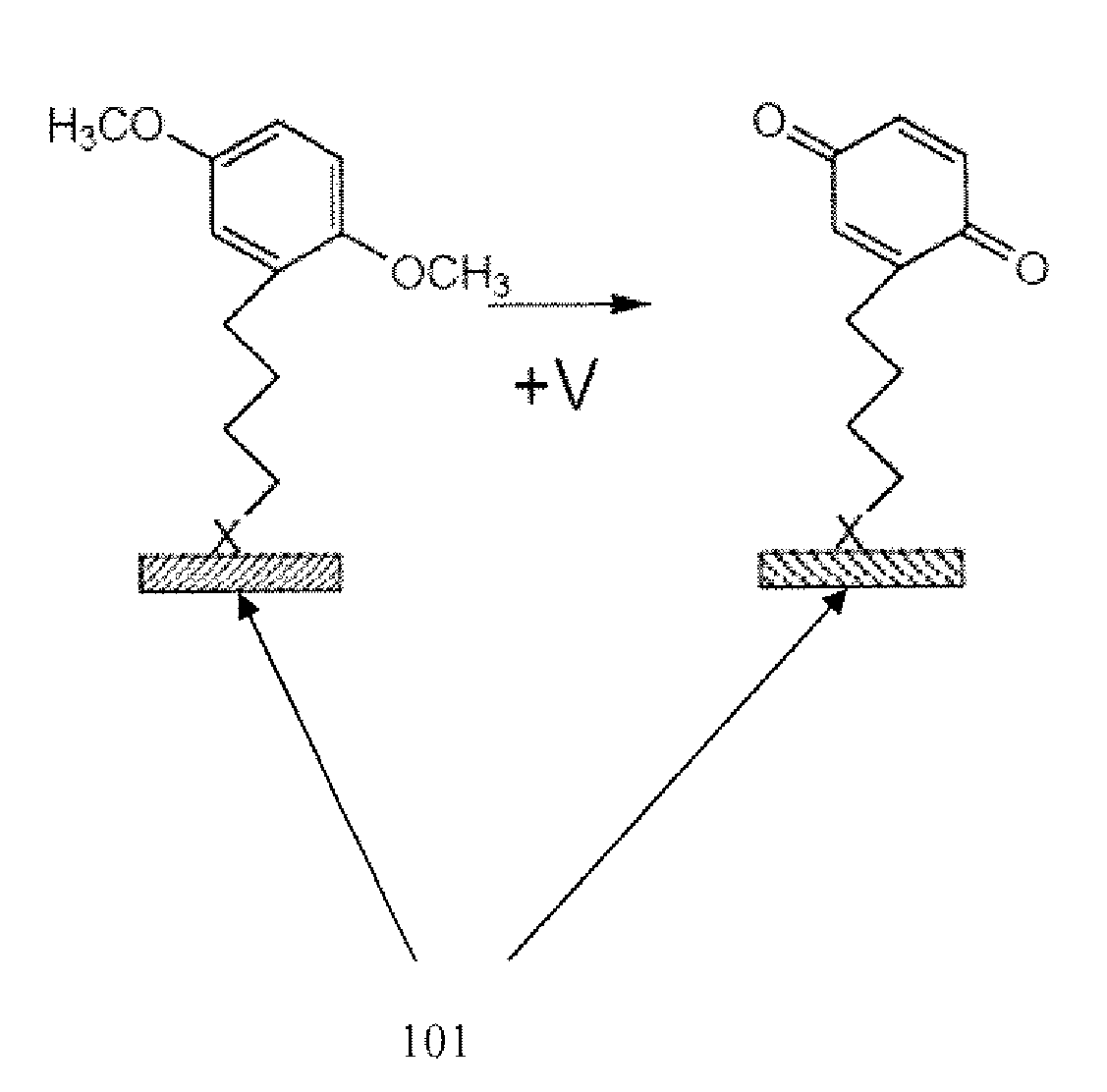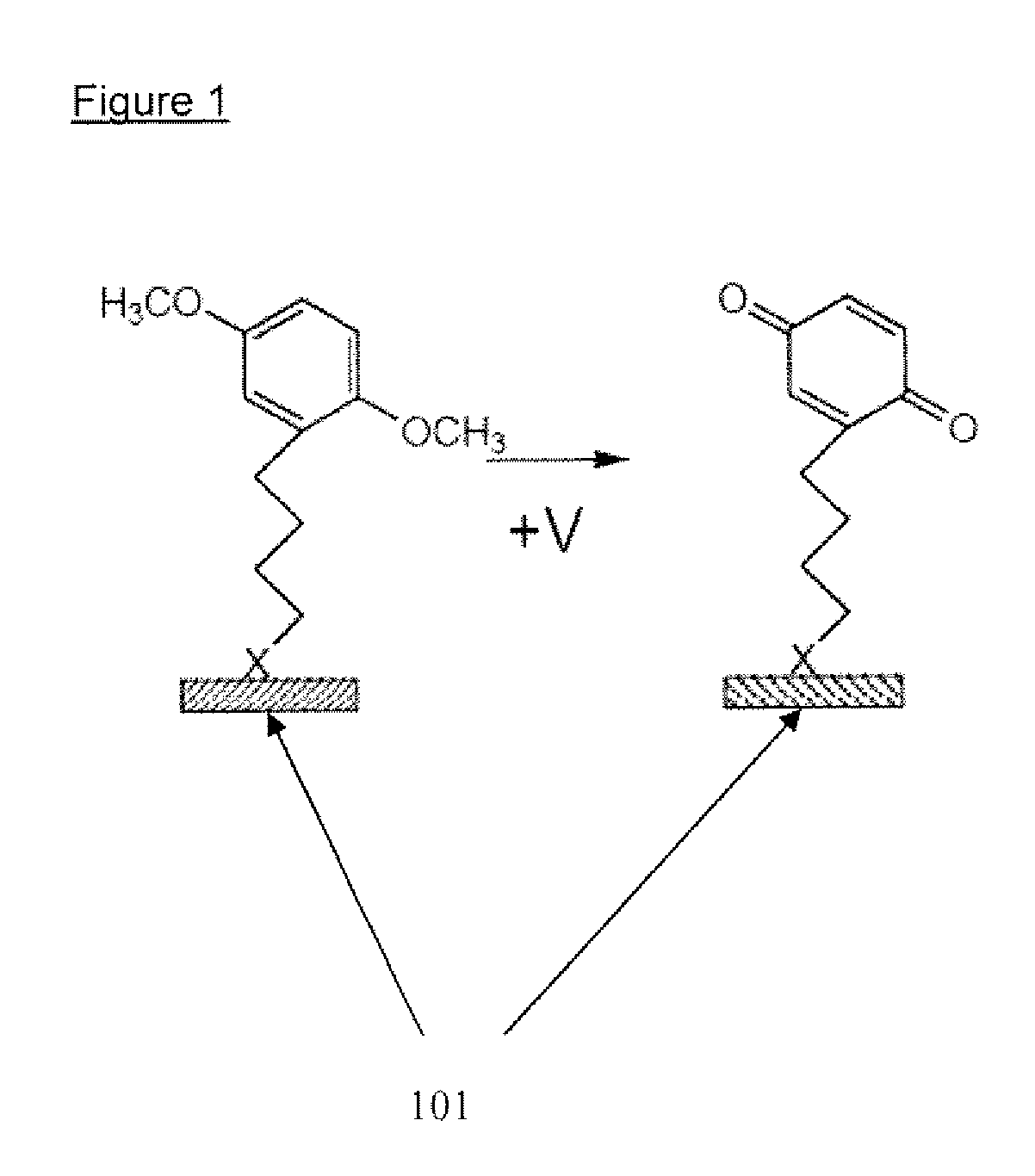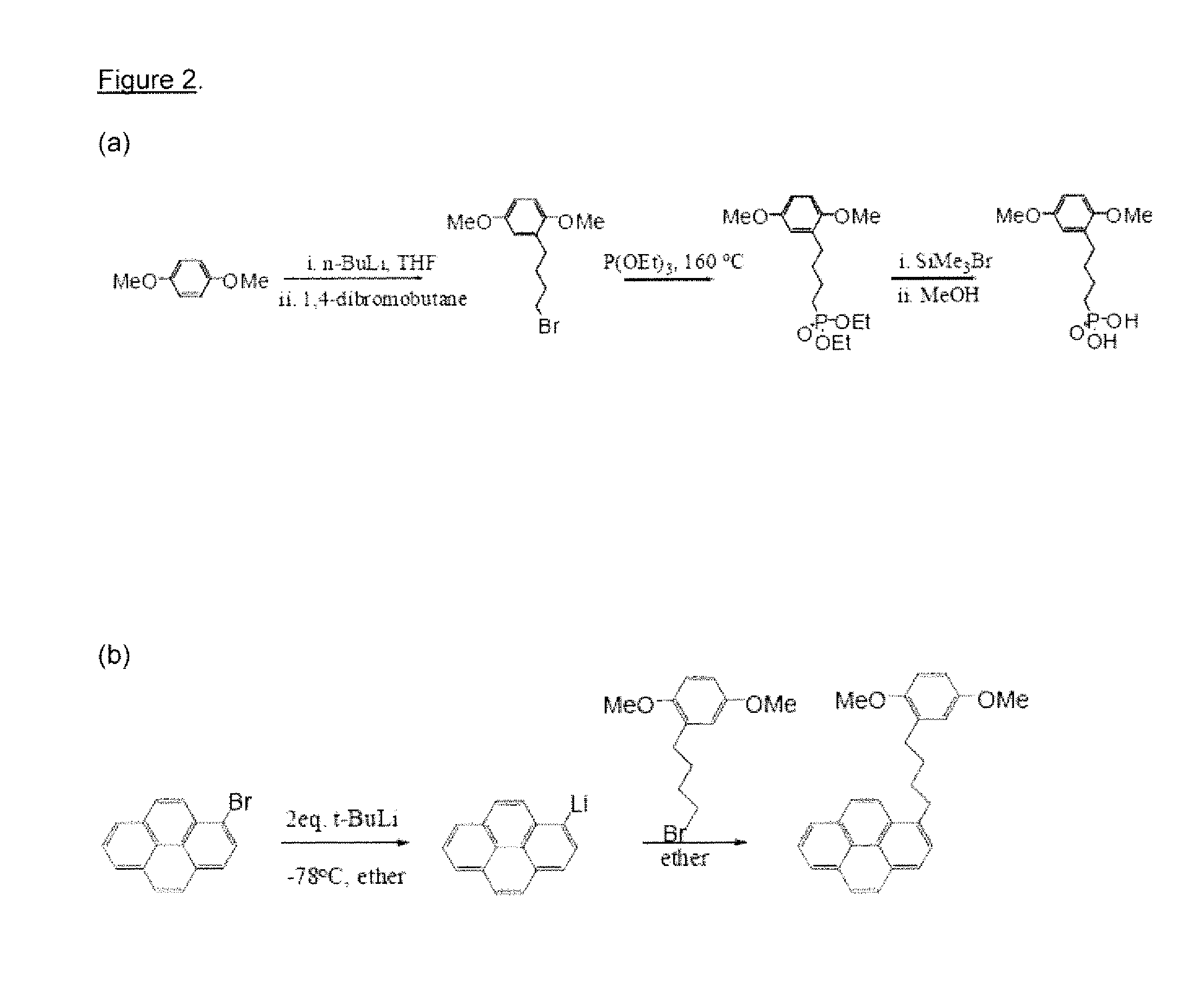Surface modification of nanosensor platforms to increase sensitivity and reproducibility
a nanosensor and surface modification technology, applied in nanoinformatics, instruments, organic chemistry, etc., can solve the problems of unsatisfactory uncontrolled functionalization, saturation of nanotube reactive sites, lack of control over the extent of functionalization, etc., and achieve the effect of increasing the sensitivity of nanosensors
- Summary
- Abstract
- Description
- Claims
- Application Information
AI Technical Summary
Benefits of technology
Problems solved by technology
Method used
Image
Examples
example 1
Active Molecules for Electrochemically Controlled, Site-Selective Surface Functionalization—Utility
[0055]Protected redox-active molecules can be employed for electrochemically controlled, site-selective surface functionalization. This technique is applicable to a large variety of surfaces including but not limited to metal electrodes (gold, platinum, etc), semiconducting surfaces (silicon, gallium nitride, etc), and nanomaterials (carbon nanotubes, metal oxide nanowires, and group IV nanowires, quantum dots, etc.).
example 2
Active Molecules for Electrochemically Controlled, Site-Selective Surface Functionalization—Advantages
[0056]1,4-benzoquinone (BQ) / 1,4-hydroquinone (HQ) has been demonstrated as one of redox pairs that can be utilized in electrochemical controlled, site-selective surface functionalization[1 b,c][2][4][6]. BQ can react with thiols, primary amines, azides, and cyclopentadienes while HQ is inactive towards all these functional groups. However, the inventors noticed that HQ derivatives can be oxidized to BQ by dissolved oxygen when placed in an aqueous solution. The inventors also observed that the rate of oxidation depends on the concentration of oxygen and pH of the aqueous solution. Therefore, over time, HQ (the “OFF” state) will be involuntarily converted to BQ (the “ON” state) without us applying any external voltage. As a result of this undesired conversion to BQ, the selectivity of this method will be greatly diminished. To solve this problem, protected redox-active molecules can ...
example 3
Active Molecules for Electrochemically Controlled, Site-Selective Surface Functionalization—Results
[0057]2-(1,4-dimethoxybenzne)-butyl phosphonic acid and 1-(4-(2,5-dimethoxyphenyl)butyl)pyrene were synthesized. Self-assembled monolayer of compound A and a self assembled layer of compound B have been formed on ITO and CNT thin films, respectively, and cyclic voltammetry was used to monitor the electrochemical activation of these surface. These surfaces can be used for selective immobilization of biological molecules terminated with thiol or primary amine. The selective functionalization will also been applied to In2O3 NW and SWNT based sensing devices.
PUM
| Property | Measurement | Unit |
|---|---|---|
| width | aaaaa | aaaaa |
| width | aaaaa | aaaaa |
| temperature | aaaaa | aaaaa |
Abstract
Description
Claims
Application Information
 Login to View More
Login to View More - R&D
- Intellectual Property
- Life Sciences
- Materials
- Tech Scout
- Unparalleled Data Quality
- Higher Quality Content
- 60% Fewer Hallucinations
Browse by: Latest US Patents, China's latest patents, Technical Efficacy Thesaurus, Application Domain, Technology Topic, Popular Technical Reports.
© 2025 PatSnap. All rights reserved.Legal|Privacy policy|Modern Slavery Act Transparency Statement|Sitemap|About US| Contact US: help@patsnap.com



